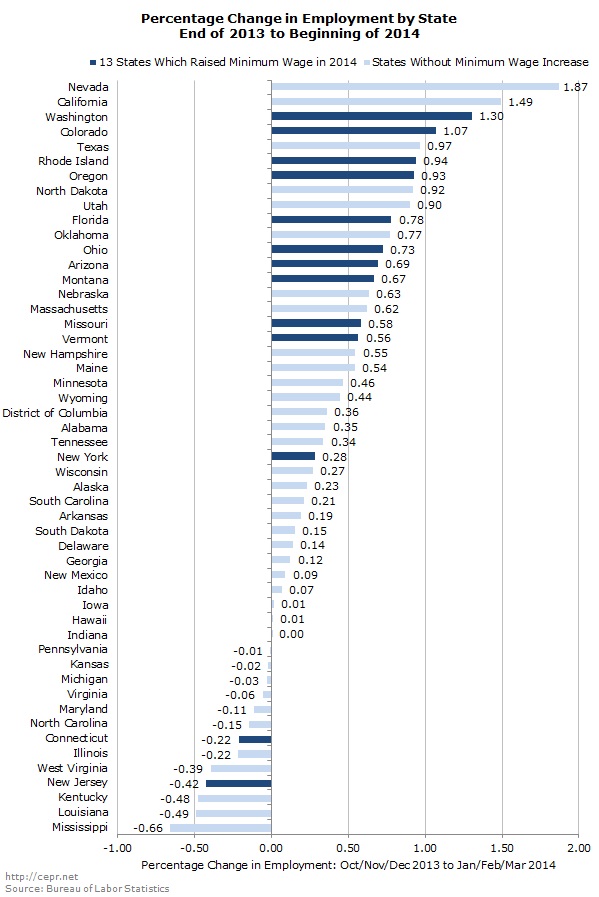April 28, 2014
At the beginning of 2014, thirteen states increased their minimum wage. Of these thirteen states, four passed legislation raising the minimum wage (Connecticut, New Jersey, New York, and Rhode Island). In the other nine, the minimum wage automatically increased in line with inflation at the beginning of the year (Arizona, Colorado, Florida, Missouri, Montana, Ohio, Oregon, Vermont, and Washington state).
Last month, CEPR looked at state-by-state employment growth in the first two months of 2014, highlighting these 13 minimum wage-raising states for easy comparison. Using new employment data from the BLS, we can now update these figures with data from the month of March.
Below, the chart shows the percentage change in employment for each state. The baseline is the average of the October, November, and December 2013 employment figures, which were measured against the average employment level for 2014 (January, February, and March). Overall, the findings are even more positive than last month’s employment figures. We see, again, little to no evidence for the claim that raising the minimum wage threatens job creation efforts.
Of the 13 states that increased their minimum wage in early 2014, all but 2 have seen a gain in employment since, and half of the 10 fastest-growing states by employment were among this group of minimum wage raisers. Interestingly, 10 of these 13 states were above the median level of employment change over this period. The average change in employment for the 13 states that increased their minimum wage was +0.61%, while for the remaining states (all of which did not change their minimum wage) the average employment change was +0.27%.
Again, it is worth noting that these findings are not dispositive, given the nature of the data and the simplicity of the analysis. Still, these findings complicate one of the major arguments used against raising the minimum wage. Even among the states, which face a greater risk of ‘race-to-the-bottom’ dynamics, we do not see evidence for the purported reduction/stagnation in employment growth.
Note: All data taken from the BLS: “Regional and State Employment and Unemployment (Monthly),” Table 5, seasonally adjusted.







